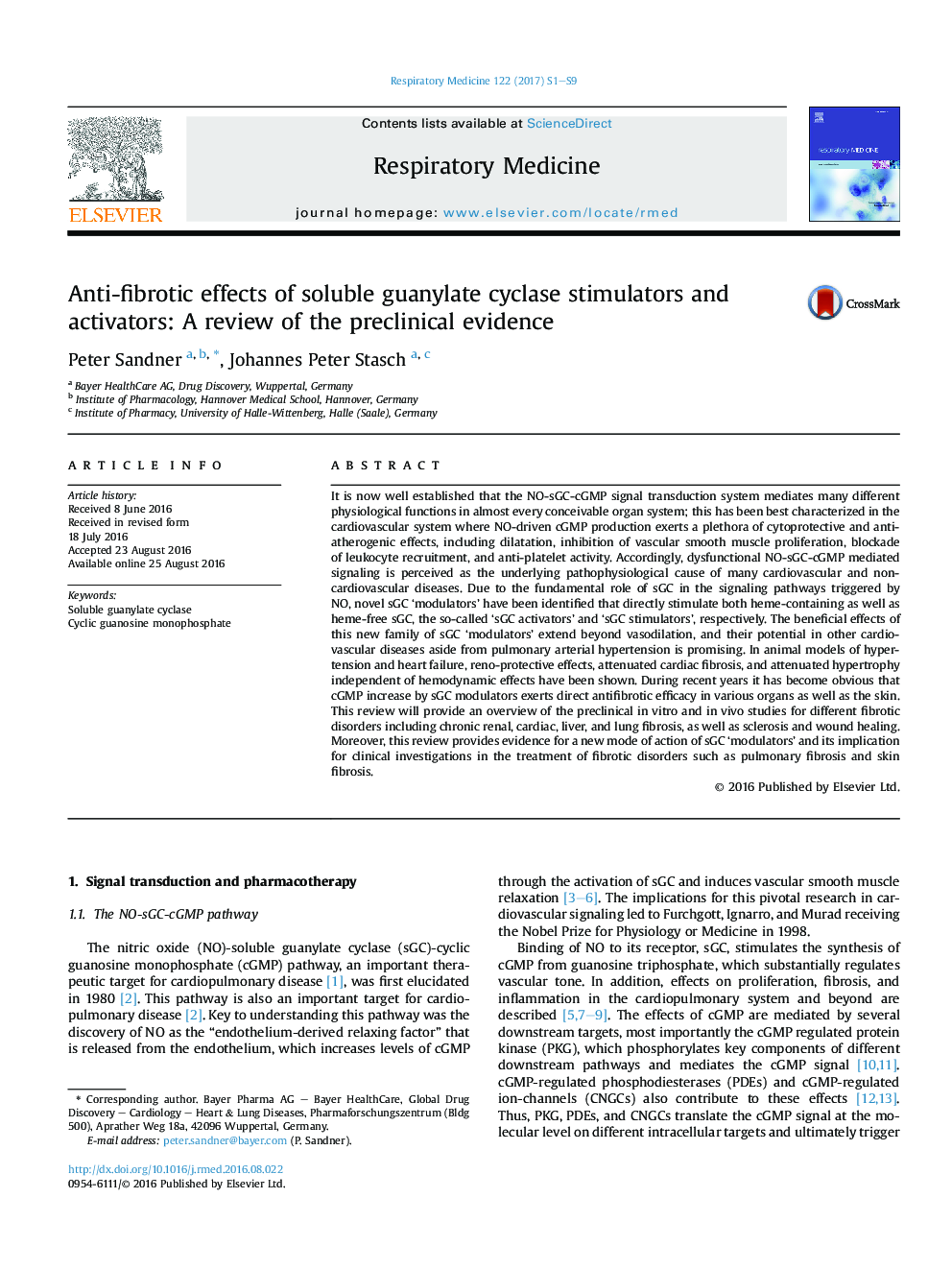| کد مقاله | کد نشریه | سال انتشار | مقاله انگلیسی | نسخه تمام متن |
|---|---|---|---|---|
| 5724874 | 1411510 | 2017 | 9 صفحه PDF | دانلود رایگان |
- Dysfunctional NO-sGC-cGMP signaling may contribute to pulmonary vascular disease.
- sGC 'modulators' directly stimulate heme-containing and heme-free sGC.
- The beneficial effects of sGC 'modulators' extend beyond vasodilation.
- Attenuation of fibrosis has been seen in rat models.
- sGC modulators stimulate the NO-sGC-cGMP signaling pathway.
It is now well established that the NO-sGC-cGMP signal transduction system mediates many different physiological functions in almost every conceivable organ system; this has been best characterized in the cardiovascular system where NO-driven cGMP production exerts a plethora of cytoprotective and anti-atherogenic effects, including dilatation, inhibition of vascular smooth muscle proliferation, blockade of leukocyte recruitment, and anti-platelet activity. Accordingly, dysfunctional NO-sGC-cGMP mediated signaling is perceived as the underlying pathophysiological cause of many cardiovascular and non-cardiovascular diseases. Due to the fundamental role of sGC in the signaling pathways triggered by NO, novel sGC 'modulators' have been identified that directly stimulate both heme-containing as well as heme-free sGC, the so-called 'sGC activators' and 'sGC stimulators', respectively. The beneficial effects of this new family of sGC 'modulators' extend beyond vasodilation, and their potential in other cardiovascular diseases aside from pulmonary arterial hypertension is promising. In animal models of hypertension and heart failure, reno-protective effects, attenuated cardiac fibrosis, and attenuated hypertrophy independent of hemodynamic effects have been shown. During recent years it has become obvious that cGMP increase by sGC modulators exerts direct antifibrotic efficacy in various organs as well as the skin. This review will provide an overview of the preclinical in vitro and in vivo studies for different fibrotic disorders including chronic renal, cardiac, liver, and lung fibrosis, as well as sclerosis and wound healing. Moreover, this review provides evidence for a new mode of action of sGC 'modulators' and its implication for clinical investigations in the treatment of fibrotic disorders such as pulmonary fibrosis and skin fibrosis.
Journal: Respiratory Medicine - Volume 122, Supplement 1, January 2017, Pages S1-S9
